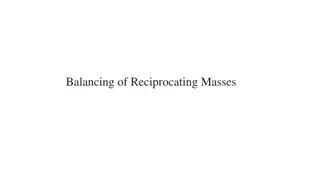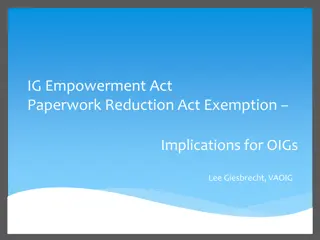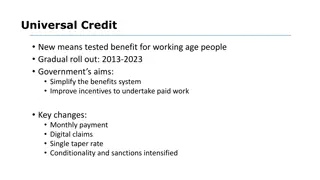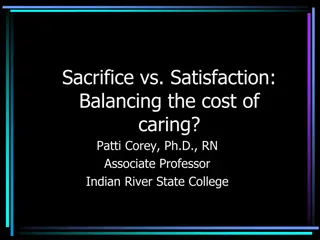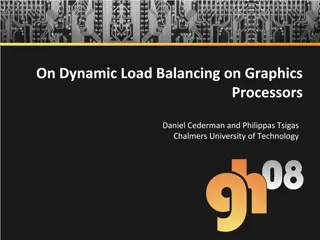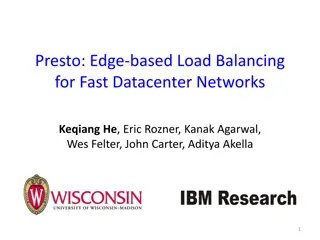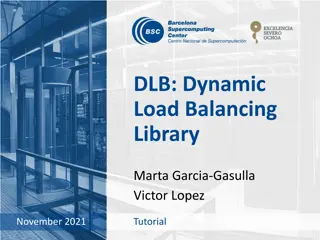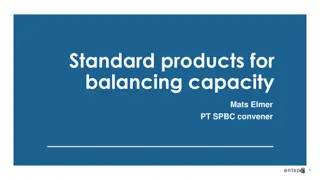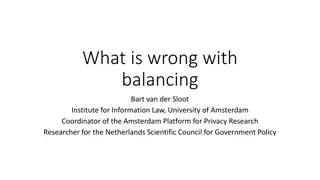Understanding the Balancing Act in School Responsibilities
School attendance exposes students to safety threats; schools must provide education while ensuring campus safety. Congress limited schools' authority to exclude disabled students. Tensions between duties are resolved by the student's IEP Team, using tools like BIPs and educational changes. Positive behavior strategies aim to support and empower students, focusing on proactive, individualized approaches.
Download Presentation

Please find below an Image/Link to download the presentation.
The content on the website is provided AS IS for your information and personal use only. It may not be sold, licensed, or shared on other websites without obtaining consent from the author. Download presentation by click this link. If you encounter any issues during the download, it is possible that the publisher has removed the file from their server.
E N D
Presentation Transcript
School attendance can expose students to threats to their physical safety that they would not otherwise face. Students may be compelled on a daily basis to spend time at close quarters with other students who may do them harm. Experience shows that schools can be places of special danger. Justice Alito: Frederick v. Morse (2007)
IDEA imposes two requirements that are in tension with each other. Schools have a duty to provide an appropriate education to every student, regardless of the student s behavior. Schools also have a duty to maintain a safe and orderly campus. And the authority of school officials is constrained on purpose.
We think it clear, however, that Congress very much meant to strip schools of the unilateral authority they had traditionally employed to exclude disabled students, particularly emotionally disturbed students, from school. Honig v. Doe, 1988. So authority is limited, constrained.
For the most part, the tension between these competing duties must be resolved INDIVIDUALLY by each student s IEP Team. But there are also tools in the administrative toolbox.
1. BIPs. 2. Educational change of placement, with agreement. 3. Educational change of placement, without agreement. 4. Expedited hearing. 5. Special circumstances removal. 6. Disciplinary change of placement. 7. 10-day FAPE-Free Zone. 8. Short term removal AFTER FAPE-Free Zone. 9. Leadership at the non-consensus IEPT meeting. 10. Law enforcement involvement.
Positive behavior strategies and supports. What we do FOR the student; not what we do TO the student. Proactive; Individualized; Focused on identified behaviors; Parental agreement. If inappropriate behaviors continue at the same rate, BIP is not working review and revise.
BIP: Code: Positive Proactive Applies to one Agreed to Parent consent What we do FOR Negative Reactive Applies to all Imposed by school Notice to parent What we do TO
Should the interventions include short term removals, such as ISS or OSS for up to three days? How should a BIP address physical restraint? Make sure parents and students understand that the Code of Conduct applies to all students. A BIP is not a personalized Code of Conduct.
Current evaluation data. A FBA, or the equivalent. A review of disciplinary history. Parent input. Teacher input. Agreement of IEP Team.
EDUCATIONALCHANGE OF PLACEMENT WITH AGREEMENT
If the behavior is a manifestation, the student must be returned to the placement from which the student was removed. Two exceptions to this: First, special circumstances cases (see Tool #5). Second: unless the parent and the LEA agree to a change of placement as part of the modification of the BIP. That s Tool #2!
Q. When the parent(s) of a child and the school personnel are in agreement about the child s change of placement after the child has violated a code of student conduct, is it considered to be a removal under the discipline provisions? A. No, if the parent(s) of a child and the school district agree to a specific change in the current educational placement of the child. OSERS Q and A: 52 IDELR 231 (2009).
.agree to a change of placement as part of the modification of the BIP. It sounds like the BIP is changed first; then the placement is changed in order to properly implement the BIP.
Due process for the student. IEP Team meeting. Documentation of parental agreement.
Schools always have the option of proposing a change of placement to a more restrictive environment (MRE). This should ONLY be done if the disability causes the misbehavior. Like any C.O.P., this requires parental agreement, or a willingness to defend the decision in hearing.
Moving a student to a MRE is an admission of failure, since the goal is to serve the student in the LRE. To justify this, school must be able to show that: 1) it has made good faith, consistent efforts to enable the student to succeed in LRE, and 2) that the MRE offers services likely to improve student performance.
A strong unit that is more restrictive perhaps self-contained. Evidence of good faith, consistent efforts to implement IEP in LRE. Current evaluation. Input from all teachers. A clear description of what can be done in the MRE that can t be done in the LRE, and of why. Legal review in advance.
1. Is it worth fighting over? 2. Are we legally defensible? 3. Is the staff united on this? Best practice: Ask them in reverse order.
If the school believes that maintaining the current placement of the child is substantially likely to result in injury to the child or others it may appeal the decision by requesting a hearing. 34 CFR 300.532(a). The decision referred to is the manifestation determination. How can this happen????? SEE NEXT SLIDE!
IEP Team concludes that behavior is a manifestation of disability. Parents do not agree to a change of placement (Tool #2); nor do we have special circumstances (Tool #5). Thus the student must be returned to the current placement. School administration deems this imminently dangerous, and thus employs Tool #4, seeking an expedited hearing.
How do you prove that injury is substantially likely if injury has not already occurred? If injury already occurred, the school may be able to use Tool #5 instead of Tool #4. Was the injury serious ? Was a weapon used? Tool #5 is quicker and easier to use.
A convincing case that maintaining the current placement is very likely to cause someone to get injured. Behavior is a manifestation. Parent will not agree to a change of placement. No special circumstances. Legal review.
Principals can order removal to IAES (Interim Alternative Educational Setting) for up to 45 school days without regard to manifestation in three cases: Carrying or possessing a weapon; Knowingly possessing, using, selling or soliciting the sale of illegal drugs; Inflicting serious bodily injury.
Even in cases of special circumstances the IEP Team must conduct an MDR. However, the outcome of the MDR does not drive the placement decision. Student can go to IAES regardless. MDR should inform revision of the BIP. Note: offense must take place at school or school function.
Drugs does not include alcohol. Nor does it include being under the influence.
A bodily injury that involves: 1. Substantial risk of death; 2. Extreme physical pain; 3. Protracted and obvious disfigurement; 4. Protracted loss or impairment of the function of a bodily member, organ or mental faculty. 18 U.S.C. 1365(h)(3).
Apparently not. See Pocono Mountain School District, 109 LRP 26432 (SEA Pa. 2008). Hearing officer decisions have consistently concluded that injuries are not serious enough to meet the federal definition.
According to OSERS Q and A document: Certain federal cases have held that rape met this definition of serious bodily injury because the victim suffered protracted impairment of mental faculties. See 2009 Q and A, Question B-1, 52 IDELR 231.
Evidence of the offense. Due process. Knowledge of how the Code of Conduct would address this offense. Timely notice of IEP Team meeting. Procedural safeguards document to the parent.
The school can propose disciplinary action in excess of 10 consecutive school days. Must be based on violation of the code of conduct. Must be equal treatment with non-disabled student. Must NOT be a manifestation of disability.
School officials determine that the student violated code of conduct. IEP Team conducts manifestation determination. If behavior is NOT a manifestation, disciplinary removal occurs, but . School must continue to provide appropriate services.
For disciplinary changes in placementif the behavior that gave rise to the violation of the school code is determined notto be a manifestation ..school personnel may apply the relevant disciplinary procedures .in the same manner and for the same duration as the procedures would be applied to children without disabilities, except as provided in paragraph (d) of this section. 34 CFR 300.530(c). (The except refers to the duty to provide FAPE).
Tool #6 is a two-step process: 1) general education due process; 2) IEP Team action to do manifestation determination and determine appropriate services. Best practice: do it in that order. This gives the IEP Team more information about the incident; allows for the parent to have adequate time to prepare for meeting.
Evidence of the offense. Due process. Knowledge of how the Code of Conduct addresses this offense. Notice of Procedural Safeguards to the parent. A quality program that can provide FAPE. Timely notice of IEP Team meeting.
It is not a denial of FAPE to fail to serve a student for ten school days, cumulatively, through the school year. No services are required, so long as non- disabled students would be treated the same for similar misconduct. See 34 CFR 300.530(b) and (d)(3). Count your days!
Knowledge of how many days have already been used. Answer to the question: are we counting the time spent in ISS?
Do I get another ten days? Does the clock start over? Can we create a FAPE-Free Zone Bank ?
You get another ten days. But they are not FAPE-Free. And you can t do it unilaterally.
School personnel.may remove a child with a disability who violates a code of student conduct for not more than 10 consecutive school days .and for additional removals of not more than 10 consecutive school days in that same school year for separate incidents of misconduct as long as those removals do not create a change of placement. 34 C.F.R. 300.530(b)(1).
After a child with a disability has been removed from his or her current placement for 10 school days in the same school year, during any SUBSEQUENT days of removal the public agency must provide services to [enable the child to participate in the general curriculum and progress toward meeting IEP goals]. 34 CFR 300.530(b)(2). So there are more days but they are not FAPE Free.
Subsequent days of removal must be accompanied by services they are not FAPE- Free. Principal must consult with a teacher about what services are needed cannot do this unilaterally. And the school must determine if this subsequent removal, combined with earlier removals, has created a change of placement.
The definition of pattern features three components. More than 10 days; Similar behavior; Proximity. Consider giving proximity some definite parameters like more than 10 days within a 90-day window.


